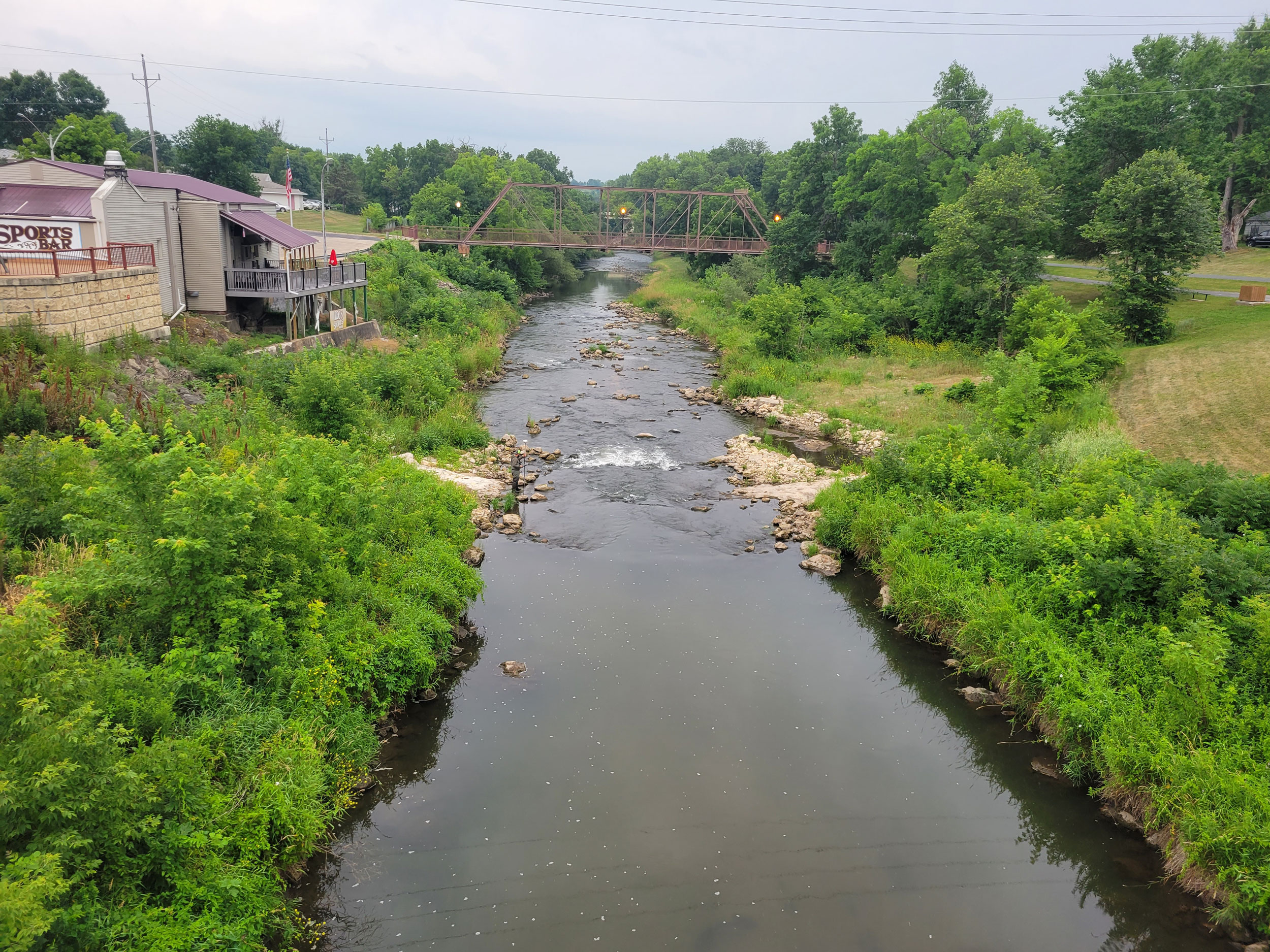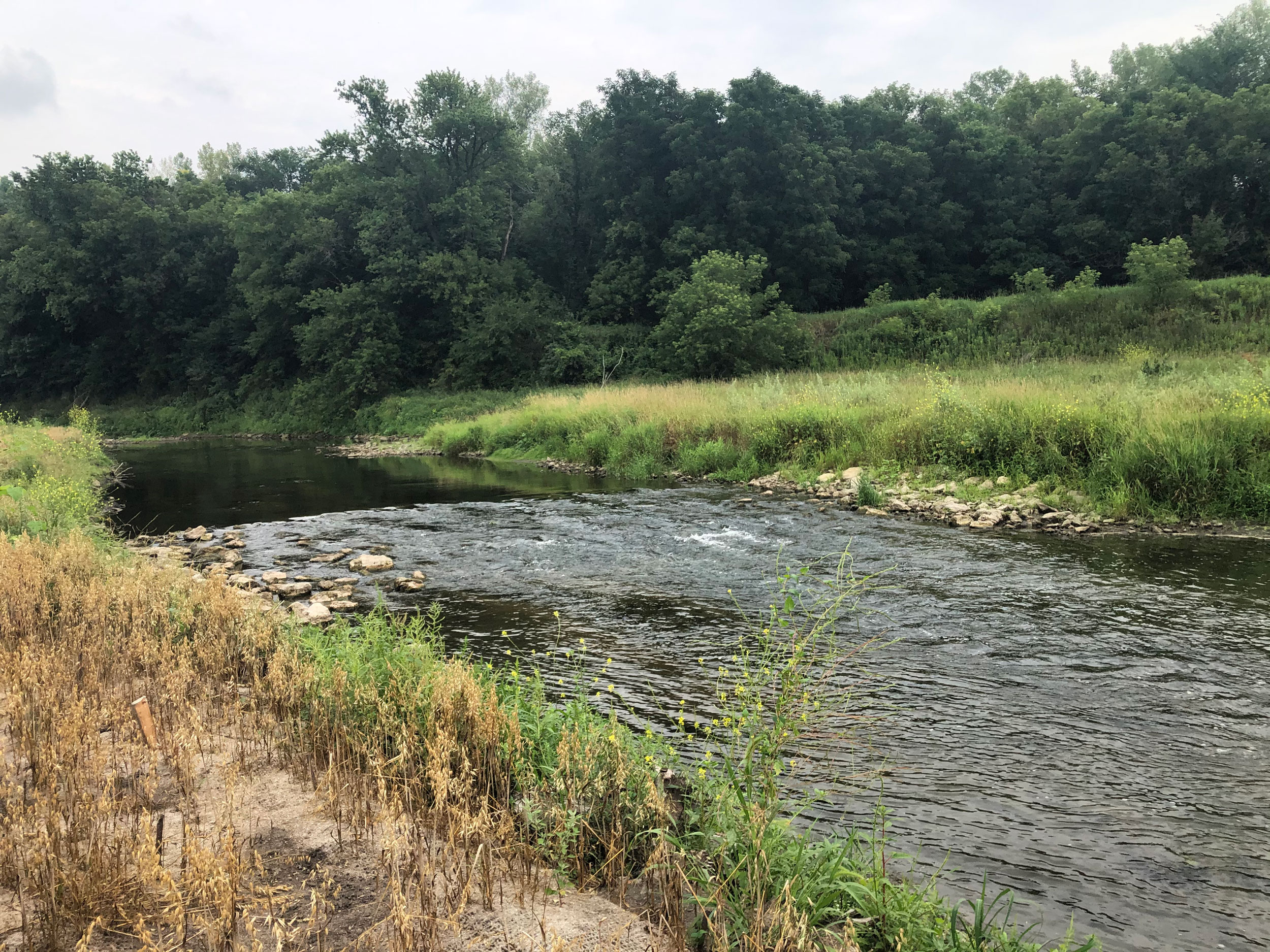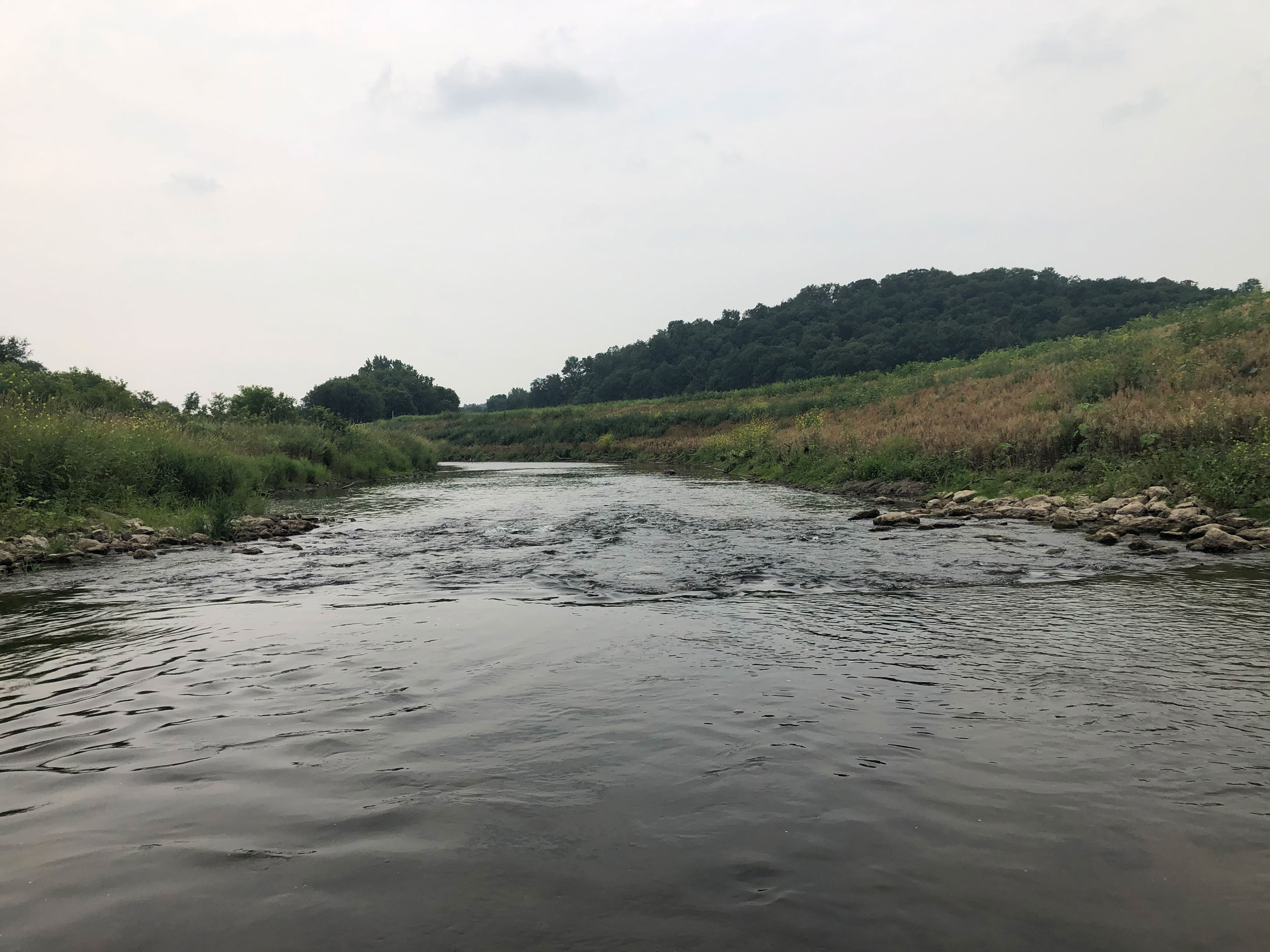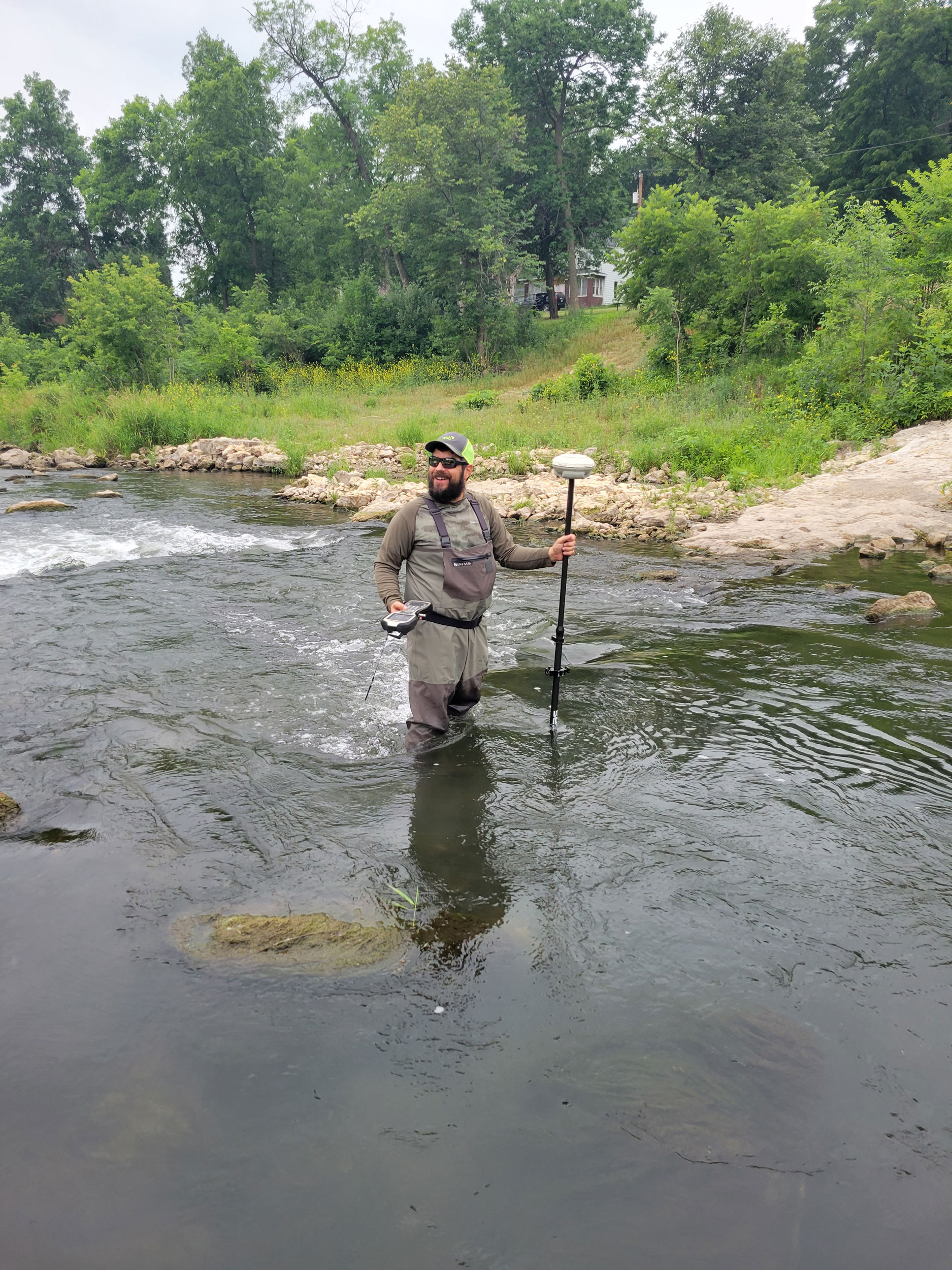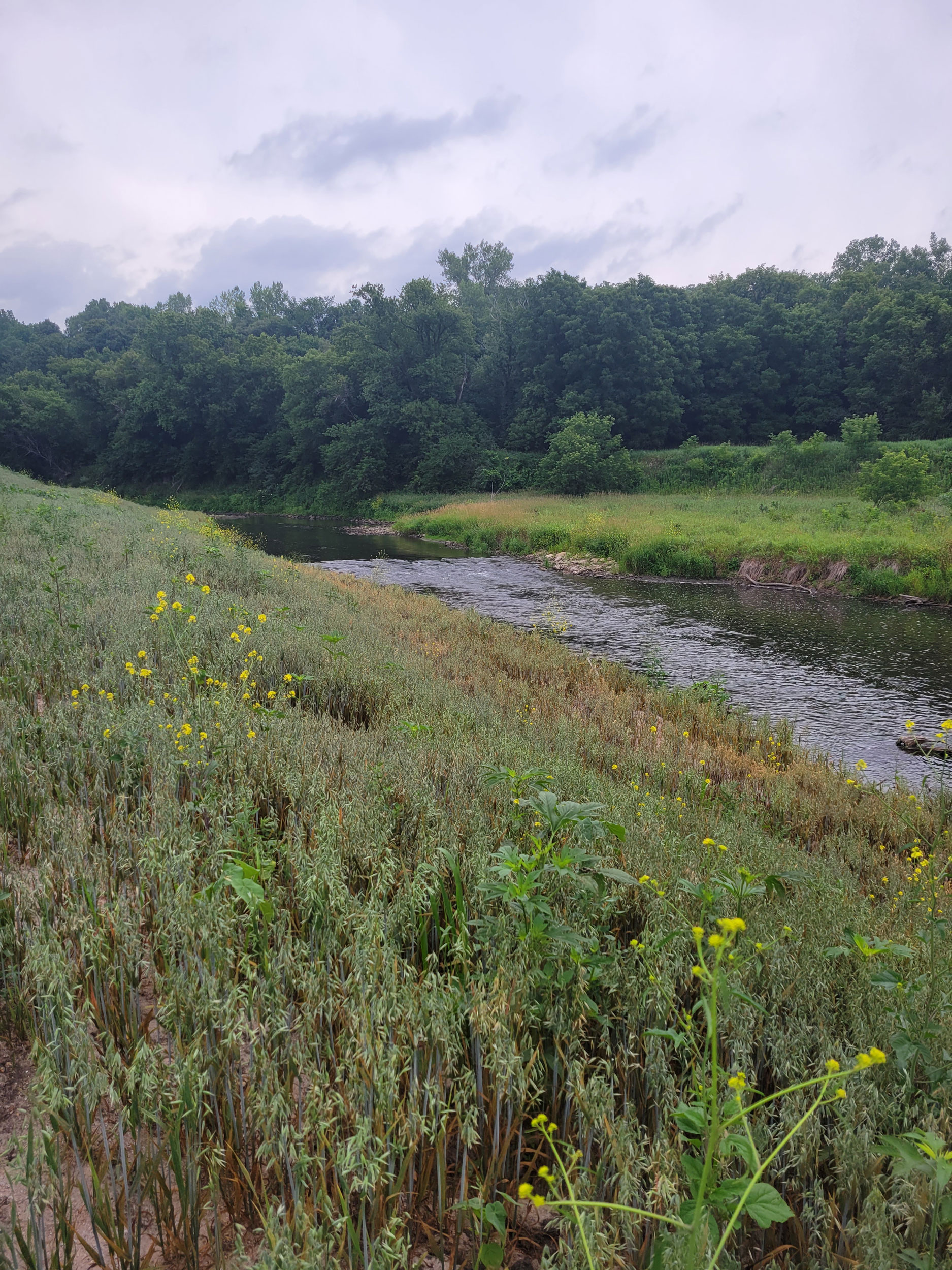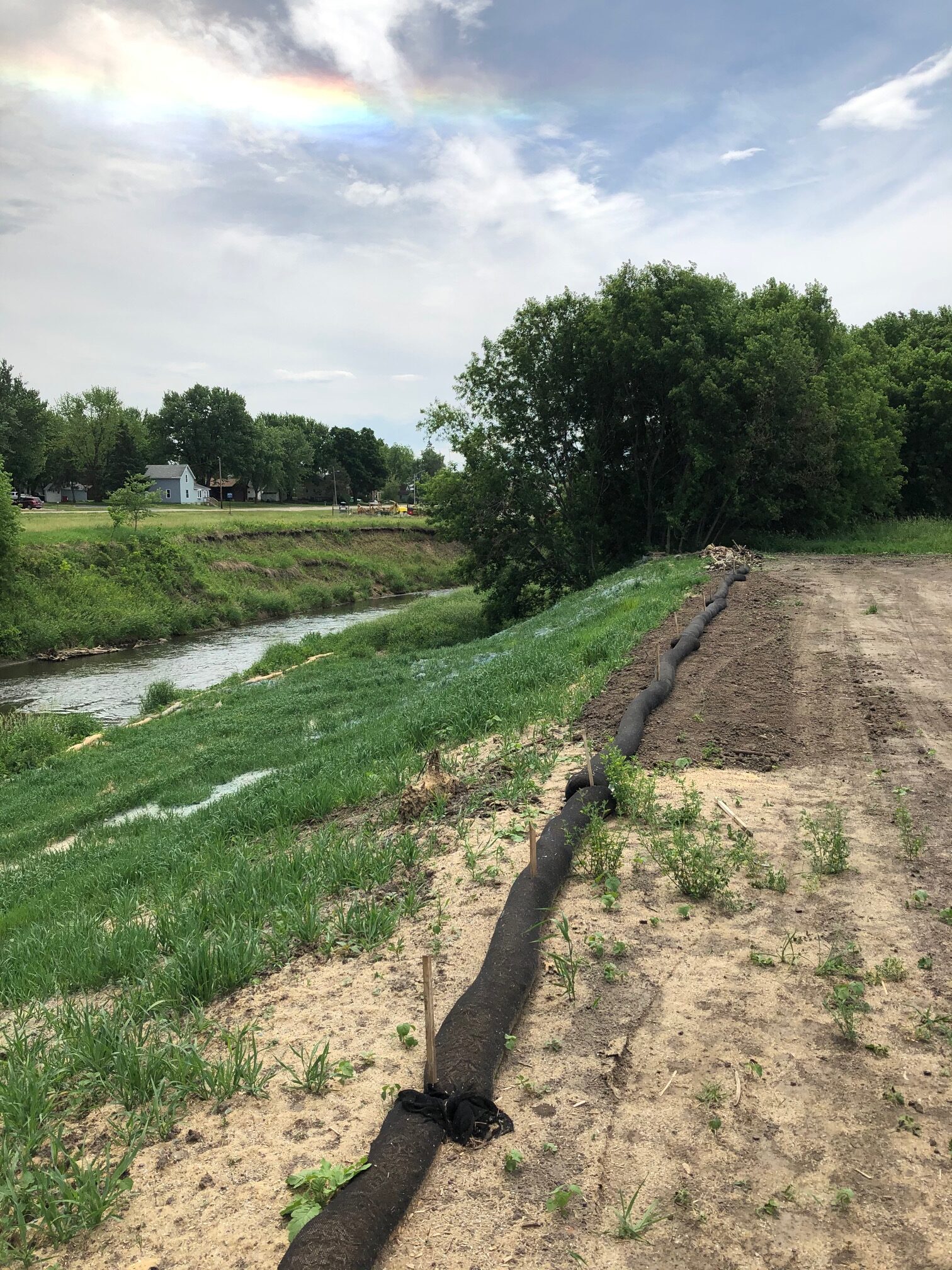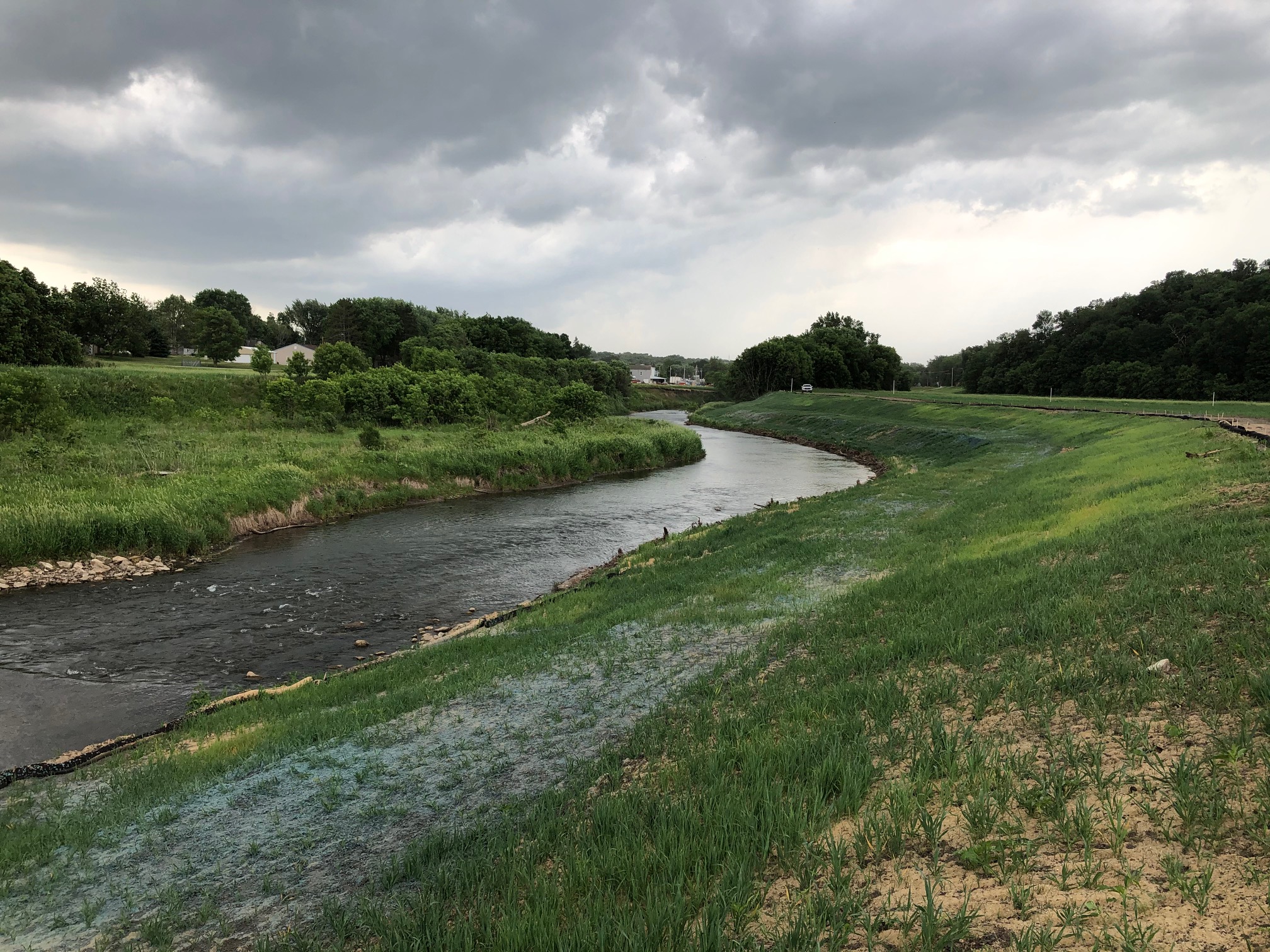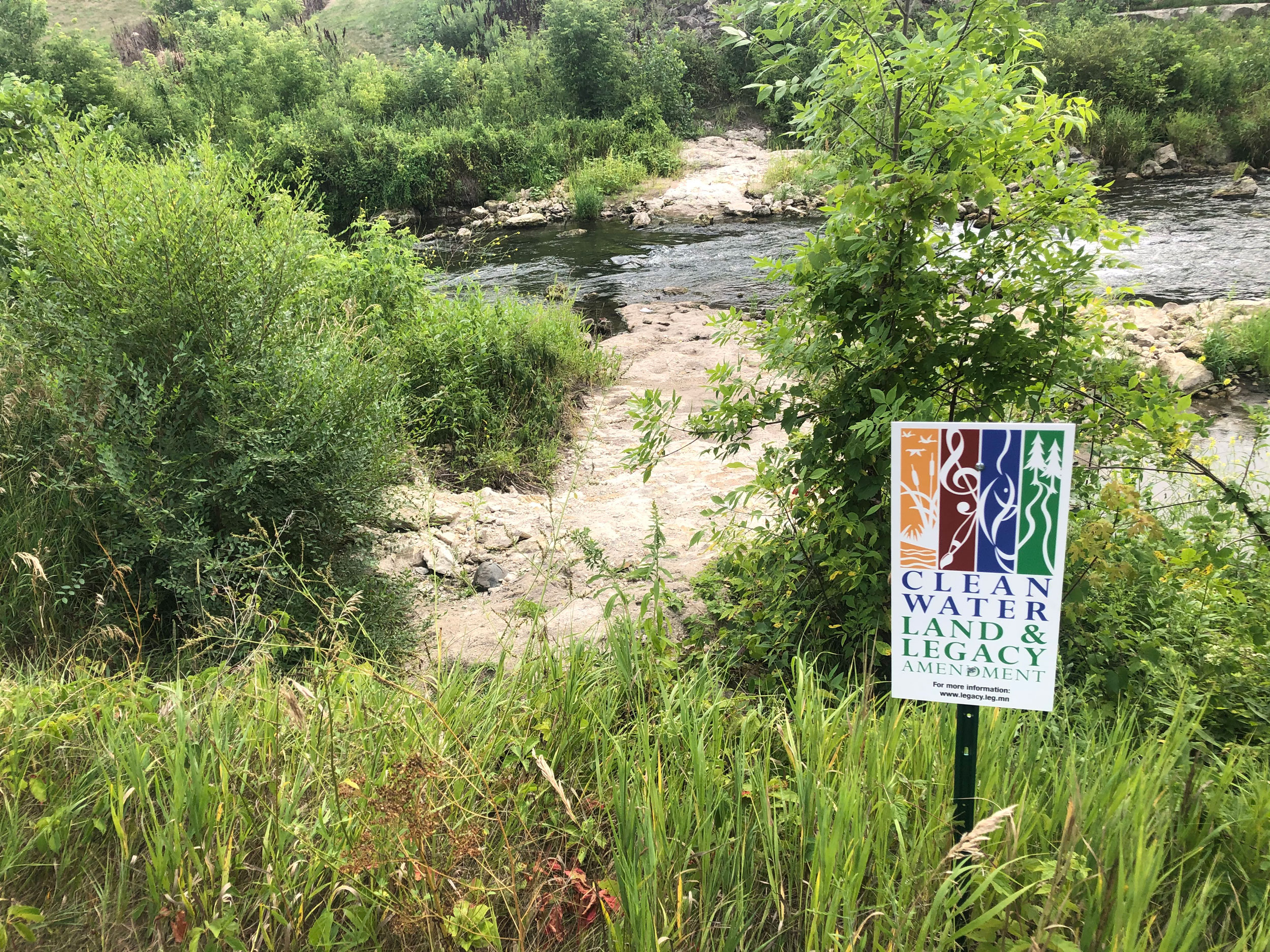WSB recently worked with the Wabasha Soil and Water Conservation District (Wabasha SWCD) in Wabasha County, MN, to remove remnants of an old dam and restore the North Fork of the Zumbro River. The project required restoring an eroded bank of the river and mitigating habitat loss.
The Zumbro River winds through southeastern Minnesota to the Mississippi River and is highly susceptible to bank erosion. The river was dammed in the early 1900s and the blockage stopped the North Fork channel from flowing. When the main dam was later removed, there were remnants of the dam on each side of the channel that needed to be removed. Additionally, the remnants blocked the river from flowing downstream when flooding or extreme weather events occurred. One of the banks had eroded while the North Fork was dammed, which created a nearly vertical drop from the top of the bank down to the water. The erosion created nutrient loading in the channel which reduced water quality within the river.
To restore the channel and alleviate nutrient loading and habitat loss, we fixed the eroded bank, removed remnants of the dam and then recreated a riffle structure for fish populations to provide a food source.
Stream and river restoration is important so that people, animals and other species can use the channel for a variety of purposes. Restoration is typically carried out to improve water quality in a channel, mitigate habitat loss and improve the public’s ability to use the channel for fishing and other recreational activities.
